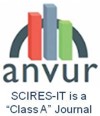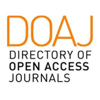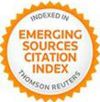Abstract
The paper aims to present and explore one of the most debated topics in recent years: the use of artificial intelligence for the production of images, and visual content in general, to the detriment of the creative process linked to the use of human intellect. Starting from the concept of homo faber, man as creator, we propose the examination of a new figure, homo artificialis, for a greater understanding of the man-artificial instrument bond. The focus of the paper is the artistic production linked to Sicilian majolica, a product particularly distinguishable due to its marked craftsmanship, through which to understand whether the creation of “artificially handcrafted” artefacts is possible and how consistent the latter are with the artistic consistency of the Sicilian ceramic production.
Keywords
Full Text:
PDFDOI: http://dx.doi.org/10.2423/i22394303v14n2p49
References
Bellone, E. (coordinatore). (2005). La Scienza. Vol. 10: La mente e il cervello. Roma: La biblioteca di Repubblica.
Boldrini, N. (2023). Generative Design: cos’è, come funziona ed esempi. Retrieved on https://www.ai4business.it/intelligenza-artificiale/generative-design/
Bruner, J. S. (2005). La mente a più dimensioni. Roma: Laterza.
De Baggis, M., & Pulifiato, A. (2023). In principo era ChatGPT. Milano: Feltrinelli.
De Biase, L. (2015). Homo pluralis. Essere umani nell’era tecnologica. Codice: Torino.
European Commission. High-level expert group on artificial intelligence. Retrieved from https://digital-strategy.ec.europa.eu/en/policies/expert-group-ai
Ferlazzo, V. (2023). Così l’IA creò l’ipermarmo. La Repubblica. Retrieved on https://www.repubblica.it/design/2023/10/09/news/lintelligenza_artificiale_per_la_ceramica_reply_marazzi_antonio_citterio_patricia_viel-417334919/
Goodfellow, I., Pouget-Abdie, J., Mirza, M., Xu, B., Warde-Farley, D., Ozair, S. Courville, A., & Bengio, Y. (2014). Generative Adversarial Nets. In Z. Ghahramani, M. Welling, C. Cortes, N. Lawrence & K.Q. Weinberger (Ed.). Advances in Neural Information Processing Systems, v. 29 (pp. 1-9). Cambridge: MIT Press.
Goretti, G., & Terenzi, B. (2023). Processi di innovazione del prodotto ceramico. AND. Rivista di Architetture, Città e Architetti, 43(1), 78-89.
Herbert Simon, A. (1965). The shape of automation for men andmanagement, volume 13. New York: Harper & Row.
Kofler, I., Habicher, D., Walder, M., & Tomelieri, A. (2022). Scenari futuri per un artigianato digitalizzato. Bolzano: Eurac Research.
La Via, C. (2023). L'intelligenza artificiale apre nuove possibilità per creazioni sostenibili. La Repubblica. Retrieved from https://www.ilsole24ore.com/art/l-intelligenza-artificiale-apre-nuove-possibilita-creazioni-sostenibili-AFYZAqj
Legg, S., & Hutter, M. (2007). A collection of definitions of intelligence. Frontiers in Artificial Intelligence and Applications, vol 157, 17-24.
Mancini, M. F., & Menconero, S. (2023). AI-aided Design? Processi text-to-image per il disegno di architettura. Diségno, 13, 57-70.
Osimo, B. (2016). Manuale di traduzione di Roman Jakobson. Pavia: Blonk.
Palmieri, A. (2023). Midjourney experimentation: representing nature on a macro scale. SCIRES-IT - SCIentific RESearch and Information Technology, 13(1), 181-188.
Puglia, D., & Terenzi, B. (2020). Nanotechnology, Additive manufacturing and Genius Loci. A case of jewellery design. Agathón, n. 07, 210-219.
Radford, A., Wook Kim, J., Hallacy, C., Ramesh, A., Goh, G., Agarwal, S., Sastry G., Askell, A., Mishkin, P., Clark, J., Krueger, G., & Sutskever, I. (2021). Learning Transferable Visual Models from Natural Language Supervision. In M. Meila & T. Zhang (eds.). Proceedings of the 38th International Conference on Machine Learning, v. 139 (pp. 8748-8763). Maastricht: ML Research Press.
Ragona, A., Buttitta, A., Sellerio, E., & Jung, M. (1975). La maiolica siciliana dalle origini all’Ottocento. Palermo: Sellerio.
Rodrigues, E., Soares, N., Fernandes, M. S., Gaspar, A. R., Gomes, Á., & Costa, J. J. (2018). An integrated energy performance-driven generative design methodology to foster modular lightweight steel framed dwellings in hot climates. Energy for Sustainable Development, vol. 44, 21-36.
Rombach, R., Blattmann, A., Lorenz, D., Esser, P., & Ommer, B. (2022). High-Resolution Image Synthesis with Latent Diffusion Models. International Conference on Computer Vision and Pattern Recognition, 10684-10695.
Sennet, R. (2012). L’uomo artigiano. Milano: Feltrinelli.
Somalvico, M. (1987). Intelligenza artificiale. Milano: Rusconi editore.
Reed, S., Akata, Z., Yan, X., Logeswaran, L., Schiele, B., & Lee, H. (2016). Generative Adversarial Text to Image Synthesis. In M. F. Balcan & K. O. Weinberger (eds.). Proceedings of the 33rd International Conference on Machine Learning, v. 48, 1060-1069. Maastricht: ML Research Press.
Treccani, Intelligenza. Retrieved on https://treccani.it/vocabolario/intelligenza/
Verganti, R. (2009). Design-driven innovation: changing the rules of competition by radically innovating what things mean. Harvard Business Press.
Westerveld, M. A. (2021). Generative Design-Recommended actions to smooth the way for production of generative designs with additive manufacturing. Retrieved from https://essay.utwente.nl/85976/1/Westerveld_MA_ET.pdf
Article Metrics
Metrics powered by PLOS ALM
Refbacks
- There are currently no refbacks.
Copyright (c) 2024 Sonia Mollica

This work is licensed under a Creative Commons Attribution-NonCommercial-NoDerivatives 4.0 International License.
SCIRES-IT, e-ISSN 2239-4303
Journal founded by Virginia Valzano






